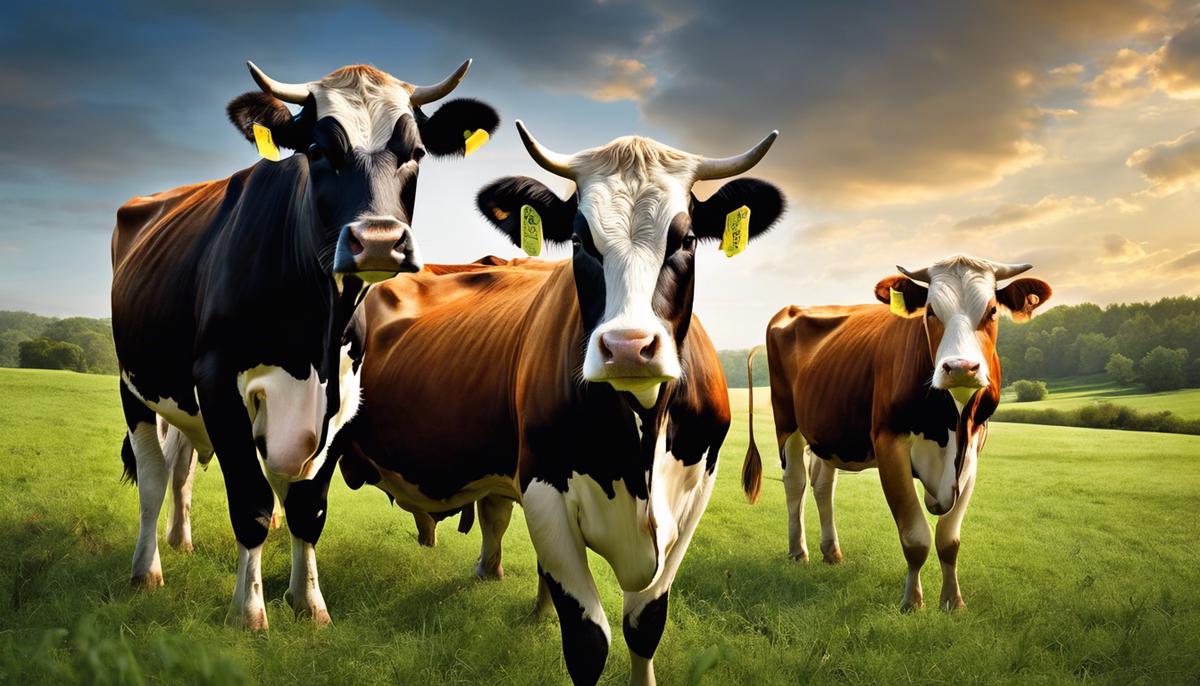

Agridisk
Egypt - Alexandria
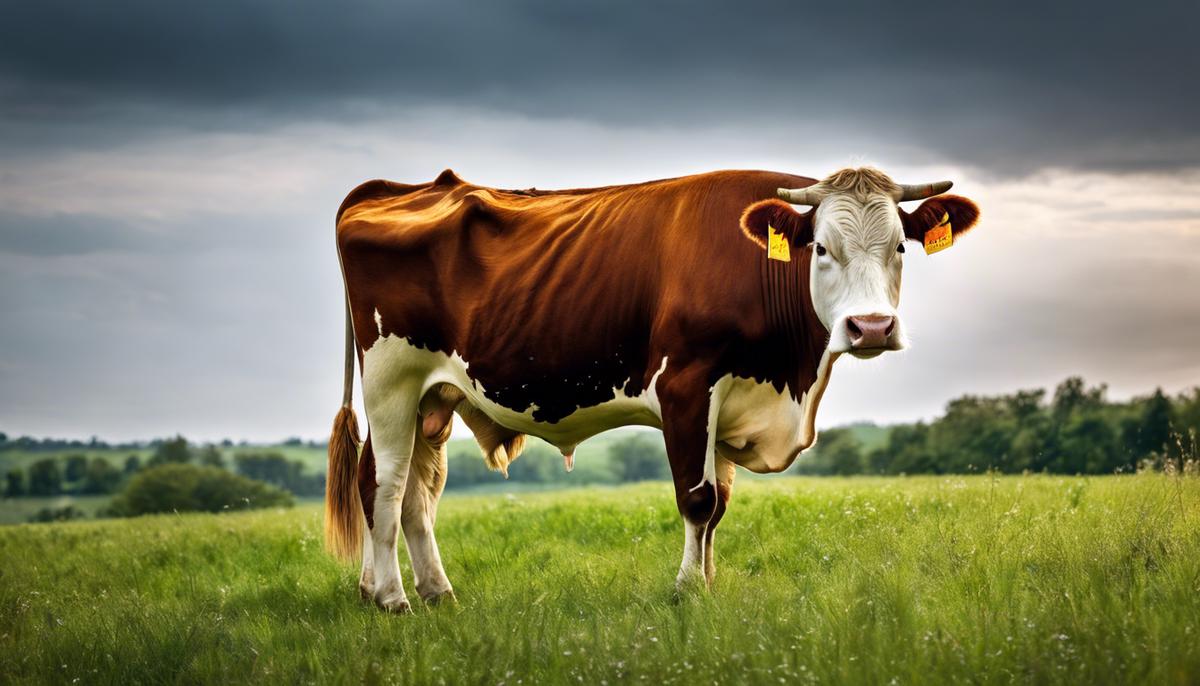
Cow feed | What is the best feed for cows?
Description: Navigating the intricate world of cattle nutrition requires an understanding that spans the biological underpinnings of livestock dietary needs and stretches to the practical applications of feed management. The fuels that drive the health, productivity, and growth of cows are diverse and complex, necessitating a holistic approach to their feeding strategies. From the essential macronutrients that serve as the building blocks of robust health to the micronutrients that fine-tune physiological processes, each component forms an integral part of the bovine diet. As we delve into the core aspects of cow feed, we unravel the threads that tie together the quality of feedstuffs, the nuanced art of supplementation, and the urgent call for sustainable practices in this critical aspect of agriculture. The insights garnered here aim to provide a comprehensive overview that empowers farmers, industry stakeholders, and the general public to make informed decisions that uphold the delicate balance between productivity, animal welfare, and environmental stewardship. Bovine health is a topic of paramount importance for veterinarians, animal nutritionists, and farmers alike. It is well-understood that appropriate nutrition is not only critical to the welfare and performance of cattle but also significantly influences the economic outcomes of dairy and beef production systems. The purpose of this article is to delineate the pivotal nutritional components indispensable for bovine health, elucidating their roles and the consequences of their deficiencies. Energy is, arguably, the foremost nutritional requisite, chiefly supplied through carbohydrates such as cellulose and starches, often derived from pasture, forages, and grains. Adequate energy intake is essential for maintaining the animal's basal metabolic functions, growth, reproduction, lactation, and immune responses. An energy deficit can lead to weight loss, decreased milk production, reproductive issues, and increased susceptibility to disease. Proteins are the building blocks for body tissue growth and repair, and they are critical during periods of development, pregnancy, and lactation. In ruminants, dietary protein is broken down by rumen microorganisms into ammonia, which is subsequently used to synthesize microbial proteins. Amino acids, the components of proteins, are either synthesized by rumen microbes or must be supplied in the diet directly. Inadequate protein can result in stunted growth, reduced fertility, and diminished milk yield. Vitamins are organic compounds that cattle require in small quantities, though their absence can be detrimental. For instance, Vitamin A is necessary for vision, immune function, and cellular growth. Deficiency might lead to night blindness and increased disease incidence. The B Vitamins are crucial in energy metabolism, and deficiencies, although rare, can cause a range of health issues. Vitamin D is necessary for calcium absorption, and a deficit can lead to rickets in young calves or osteomalacia in adults. Minerals are inorganic elements that serve a plethora of roles. Calcium and phosphorus are vital for bone structure and metabolic processes. A notable condition associated with inadequate calcium is milk fever, observed in lactating cows. Trace elements like zinc, copper, and selenium are integral to numerous bodily functions, including enzyme activities, and deficits can manifest in impaired growth, fertility issues, and weakened immune functions. Essential fatty acids are required for numerous biological processes, including energy production, reproduction, and forming cell membranes. Omega-3 fatty acids, for instance, are associated with reduced inflammatory responses and improved reproductive performance. Water, though often overlooked, is an essential nutrient. It is imperative in digestion, temperature regulation, and transportation of nutrients and waste products. Dehydration can rapidly lead to decreased feed intake and milk production, and in severe cases, death. In conclusion, an optimal bovine diet must be a carefully calibrated balance of these crucial nutritional elements. The interplay between energy, protein, vitamins, minerals, fatty acids, and water is indeed what sustains bovine health. Proper attention to these dietary components ensures the vitality of cattle, and by extension, the success of bovine agricultural endeavors. In light of the multifaceted nutritional components that have previously been discussed, it is imperative to highlight the central role of forage and feedstuff quality in dictating the formulation of cattle diets. Quality, in this context, transcends the simplistic measures of freshness or palatability and delves into the nutritional density, fiber content, and digestibility of the dietary components presented to the bovine cohort. Fiber is a paramount consideration in ruminant nutrition, with neutral detergent fiber (NDF) and acid detergent fiber (ADF) being critical indicators of forage quality. High-levels of NDF ensure rumen fill and stimulate chewing activity which is essential for saliva production, aiding in rumen pH regulation. Conversely, excessive fiber can limit intake and lead to reduced energy density of the diet. ADF, indicative of cell wall constituents such as cellulose and lignin, is inversely related to digestibility; thus, forages with lower ADF are generally more digestible and more capable of supporting higher levels of production. The digestibility of the forage is a definitive factor in its nutritive value. Highly digestible forages provide more readily fermentable substrates to the rumen microbiota, enhancing volatile fatty acid production which is primary for energy provision. Moreover, the digestibility of protein in the forage impacts its bioavailability. The synchronization of energy and nitrogen release in the rumen is vital for efficient microbial protein synthesis which, in turn, influences the amino acid profile available for absorption in the small intestine. The stage of growth at harvest, forage species and variety, conservation method, and storage conditions have profound effects on the quality of forages. For instance, delaying harvest to increase yield often results in a decline in protein content and an increase in fiber, which affects the digestibility negatively. Thus, when formulating cattle diets, it is crucial to analyze these factors to optimize the nutritional intake and minimize waste through undigested feed. Moreover, forage quality profoundly affects feedstuff selection and supplementation strategies. Diets based on high-quality forages may require minimal supplementation, whereas those based on poorer-quality forages would necessitate a more rigorous supplementation regime to meet the animals' nutritional demands. The decision matrix for supplementation traverses the supplementation of energy, protein, macro and micro minerals, and vitamins, contingent upon the deficiencies or excesses presented by the basal forage. The interplay between forage quality and the animal's physiological state must also be acknowledged. Lactating cows, growing calves, and breeding bulls exhibit disparate nutritional requirements; thus, forage testing and diet formulation should reflect these specific needs. Periodic reassessment of forage quality and cattle condition is essential, as the variability within a forage crop and changes in animal requirements can occur throughout the feeding period. It is also critical to recognize that not all feedstuffs are created equally. The incorporation of silages, haylages, grains, and by-product feeds into cattle diets must be predicated upon an accurate understanding of their chemical composition, digestibility, and interaction with other diet constituents. The optimal utilization of these feed resources can promote both economic and environmental sustainability in cattle production. In conclusion, the myriad factors influencing forage and feedstuff quality are central to the implementation of sound cattle diet formulations. The meticulous consideration of forage and feedstuff quality ensures that cattle receive a diet tailored to their nutritional needs, promoting health, productivity, and welfare. As scientists and nutritionists continue to expand the knowledge base through dedicated research, cattle diet formulations evolve to embrace these advancements for the enhancement of the bovine species’ nutritive outcomes. Abstract: Body: Distinct situations arise where the natural or primary feed sources fall short of meeting the nutritional demands of cattle. Such instances may encompass harsh environmental conditions, physiological states demanding heightened nutrition, forage with suboptimal nutritive value, or systemic health issues within a herd. During periods of extreme temperatures, both hot and cold, the physiological stress on cattle alters their metabolic needs. Especially, in the lactation phase or the final trimester of gestation, supplementary energy, protein, and certain micronutrients must be provided to avert the risk of malnutrition-related complications. Forage quality can vary significantly with seasonal changes. Deficits in macro and micronutrients or an imbalance in the available feedstuff may precipitate the requirement for dietary supplementation. Additionally, young, rapidly growing cattle or those recovering from illness may also demand enhanced diets to facilitate their development or convalescence. Transitioning to the practical implications of these needs, it is vital to comprehend that the art of supplementation is not without intricacy. One must weigh the physiological status of the cattle, the existing dietary composition, forage availability, and anticipated production outcomes. Strategic administration of dietary supplements may involve bolstering the energy density of the diet through the inclusion of fats or starch-rich grains, ensuring availability of crucial amino acids via protein supplementation, or rectifying specific mineral and vitamin insufficiencies. The route of dietary supplement provision is equally pivotal to their efficacy. Options include top-dressing on feed, incorporation in total mixed rations, free-choice provision in mineral feeders, or direct oral administration through boluses or drenches in acute scenarios. The integration of precision feeding technologies, such as computerized feed delivery systems and real-time monitoring, has the potential to revolutionize supplementation practices by administering tailor-made nutrient profiles to individual animals or defined groups within a herd. Rigorous attention should be dedicated to avoiding the perils associated with over-supplementation such as toxicity, nutrient antagonisms, or imbalanced intake of concentrate and forage that can disrupt rumen efficiency and health. Implementing dietary supplements must also harmonize with ethical considerations of animal welfare and environmental stewardship. Continuous research is requisite to refine supplementation protocols, taking advantage of advancements in nutritional science and livestock management. Conclusion: In conclusion, pinpointing the necessity of dietary supplements for cattle hinges on a profound understanding of animal physiology, nutrition, and environmental interplays. The judicious application of supplements can impart monumental benefits to cattle well-being and farm productivity. However, this must be approached scientifically, with a conscientious application of research-based guidelines to ascertain that the intervention is beneficial and sustainable in the long term. Sustainable Cow Feeding: Strategies for Environmental and Productivity Gains As world populations burgeon and environmental pressures mount, sustainable agricultural practices have become pivotal. Among these practices, sustainable cow feeding stands out due to its dual capacity to improve environmental outcomes and bolster agricultural productivity. To achieve sustainability in bovine nutrition, a multifaceted approach that encompasses feed efficiency, dietary modifications, and innovative feeding practices is essential. Feed efficiency bears significant implications for both economic and environmental sustainability. The crux lies in maximizing the conversion of feedstuff into milk or meat, thus lessening waste. A paramount strategy is the optimization of the feed conversion ratio (FCR), which involves meticulous monitoring of feed intake and outputs. Advanced technologies like precision dairy farming employ sensors and data analytics to elucidate feed intake patterns, enabling targeted interventions to elevate efficiency. The enteric fermentation process in cattle is a notable source of methane, a potent greenhouse gas. Research has identified certain feed additives and dietary shifts that can mitigate methane emissions. Incorporating tannins, saponins, and nitrate-rich supplements can hinder methanogenic archaea, thereby reducing methane production without impairing rumen function. Sustainable grazing systems, such as rotational or management intensive grazing, aid in preserving pasture ecosystems. These systems stimulate plant growth, sequester carbon, and optimize land-use efficiency. By carefully controlling grazing patterns, soil health is maintained, and biodiversity within pasturelands is enhanced. Integrated crop-livestock systems synergize the benefits of both farming types. Crop residues can supplement cattle diets, thus reducing reliance on cultivated feed crops and enhancing soil quality through manure deposition. These synergies contribute to the cycle of sustainability, minimizing waste and maximizing resource use. Food industry byproducts like brewer's grains, beet pulp, and citrus peels represent a nutritive and cost-effective feed source. This 'upcycling' not only reduces feed costs but also circumvents the environmental impact of waste disposal. Leveraging these materials exemplifies a circular economy within the cattle feeding regimen. Precision feeding stands at the forefront of optimization. This practice tailors the nutrient supply to the exact requirements of individual animals or herds. It prevents overfeeding and ensures nutrients are utilized fully, emphasizing both environmental stewardship and cost-effectiveness. Embracing these sustainable cow feeding practices is not merely a choice but a necessity to ensure continued agricultural productivity within the bounds of our finite resources. The challenge lies in harmoniously integrating these practices into existing systems while continuously innovating and adapting to emerging research findings. As stewardship of the land and welfare of the animals remain central to these efforts, sustainable cow feeding is a testament to the profound interconnection of agriculture and the environment. Efficient feed management is a keystone in the arch of sustainable cattle production, serving as a conduit to substantial economic gains for producers. The deliberate calibration of feed input against animal output, colloquially termed as feed efficiency, directly impacts the profitability of livestock operations. Feed efficiency is measured using a metric known as the feed conversion ratio (FCR), which is the amount of feed consumed relative to the weight gained by the cattle. Minimizing FCR is of paramount importance as it implies that less feed is required to produce a pound of beef or a liter of milk. Advanced tactics such as precision feeding adjust nutrient intake on an individual or herd basis to prevent the squandering of feed resources. This method, juxtaposed with a rigorous assessment of cattle nutritional status and growth performance, facilitates optimal FCR, buoying economic efficiency. Additionally, the economic aspect of cattle nutrition is not confined to mere cost savings on feed. Proper feed management augments cattle health, thereby diminishing veterinary costs associated with nutrition-related diseases and fortifying herd immunity. This, in turn, results in a sturdier herd, less susceptible to disease outbreaks that can be financially draining. Beyond health, fertility rates are consequently heightened through judicious nutrition management, which equates to more calves and a quicker genetic turnover, both of which are quintessential for economic sustainability within the cattle industry. Furthermore, the optimization of growth rates in young stock and the milk yield in dairy cows can drastically enhance revenue, with these being principal outputs of the cattle enterprise. The foray into sustainable practices, such as rotational grazing, not only fosters the longevity of pasture conditions but also trims down the requirement for supplemental feed, thereby curbing feeding costs. The deployment of crop residues and byproducts from the food industry in feed is another stratagem that reduces input costs while concurrently lessening the ecological footprint of cattle operations. With the advent of regulatory pressures and societal demands for environment-friendly farming practices, economic advantages can also be reaped from implementing dietary modifications aimed at reducing enteric methane emissions. Feed additives such as tannins and saponins are emerging as potent tools to combat this concern without hampering productivity, aligning ecological responsibility with economic benefit. The seamless integration of these sophisticated feeding strategies presupposes an in-depth comprehension of the intricate relationships between feed components and cattle physiology. Continuous scholarly pursuit in the field of bovine nutrition is indispensable to adaptively manage feeding systems in correspondence with the latest scientific insights and technological advancements. In summation, efficacious feed management is the linchpin that secures the nexus between economic viability and ethical stewardship in cattle production, rendering it an imperative endeavor for any producer aiming to flourish in the contemporary landscape of cattle husbandry. Embarking on a journey that has traversed the broad landscape of cattle nutrition, we arrive at a place where the harmonization of economic sensibilities and nutritional excellence becomes possible through informed feed management. Strategic choices in sourcing, storing, and formulating cow feed shape the financial backbone of animal husbandry, weaving together the threads of cost-effectiveness and animal health. This harmony equips us with tools to confront the challenges of market variability and resource limitations while keeping the well-being of our cattle as the compass for our actions. The knowledge and approaches discussed lay down a path towards sustainable success, painting a future where the health of the herd and the health of the land are seen not as conflicting interests, but as a singular, unified vision for the continued prosperity of cattle farming. The vitality of effective feeding practices in cow health, productivity and overall welfare cannot be overstated. As the backbone of our agricultural industry, cows have a unique and complex digestive system that requires a carefully balanced diet to perform optimally. To fully appreciate the importance of appropriate cow nourishment, it's crucial to delve into the anatomy and physiology of the cow's digestive system and understand how its functioning significantly contributes to nutrient absorption and overall health. Furthermore, it is essential to acknowledge the varying nutritional requirements of cows based on their age, health, and reproductive status, and understand how meeting these requirements in the best possible way can substantially enhance productivity and lifespan. We must also broaden our perspective to discern the influence of feed on stress levels and physiological health of cows, and learn about the state-of-the-art advancements and research in the field of cow feed. By doing so, we can appreciate the myriad of factors that contribute to the overall well-being of the cow, including but not limited to, its diet. The cow's digestive system is a remarkable biological machine, designed to transform a simple mouthful of grass into life-sustaining energy. This process, known as feed conversion, is not merely a matter of chewing and swallowing, but rather a meticulously coordinated symphony of physiological and biochemical processes. Understanding these processes offers insights into the wonder of evolution and ultimately assists in the optimization of practices within the cattle industry. The point of entry, the mouth, carries out the primary task of crushing the grass into manageable pieces. This action, combined with saliva, kick-starts the digestion process by breaking down the complex structures of the feed – a preliminary attack that continues in the rumen, the first of four stomach compartments. Within the rumen, approximately 25 gallons of semi-fluid mixture of grass and saliva, a universe of microorganisms – bacteria, protozoa, and fungi – begins breaking down the feeds further. They specifically target cellulose – a fibrous component of plant cell walls usually resistant to normal digestion processes. This symbiotic relationship, intricate and fascinating, enables cows to extract nutrition from resources largely inedible to other animals. A crucial point to note is cows are ruminants – meaning they regurgitate, re-chew, and re-swallow their food, a process known as 'rumination' or 'chewing the cud.' This additional mechanical breakdown of the feed facilitates efficient digestion in subsequent stages. Once preliminary digestion in the rumen is complete, the 'cud' advances to the reticulum, the second stomach compartment. Here, heavier, less digested particles are separated and sent back to the rumen, maximizing the efficiency of the breakdown process. In the third compartment, the omasum, water and some minerals are absorbed. This makes the remaining ingesta more compact and helps control fluid balance, critical in maintaining the cow's overall health. The final stage of digestion occurs in the abomasum, or the ‘true stomach’, sharing similarities with the human stomach. Here, acids and enzymes further breakdown the food, targeting proteins and other nutrients, refining them into forms that can be absorbed into the bloodstream. The final products of this comprehensive digestive process - glucose, volatile fatty acids, and other essential nutrients – are transported throughout the cow's body to sustain growth, reproduction, and milk production. Understanding the cow's digestive system's complexities offers a deep appreciation for the intricate lives of these often-overlooked animals. Indeed, the cow's ability to convert a blade of grass into usable energy is nothing short of astonishing – a testament to the power and the elegance of biological systems honed by millions of years of evolution. The Essential Nutritional Needs of Cows Demystifying the nutritional requirements of cows entails delving deeper into their dietary habits and biological needs. As ruminants, cows not only require energy and proteins, but also water, minerals, and vitamins for optimal health and growth. Cow's primary source of energy - harnessed from carbohydrates, fats, and proteins - is most abundantly derived from plant materials. While tho these are consumed in various forms, it's the starch, sugar, and fiber content in them that significantly contribute to energy levels. Precisely, fiber - broken down by ruminal microorganisms into volatile fatty acids (VFAs) – is a critical part of a cow's diet as it acts as the primary energy source. The protein requirement for a cow is satisfied by the microbial protein produced in the rumen, and by feeding them a supplemental dietary protein. For example, pasture-based diets often account for all or nearly all of a cow's protein needs. Minerals form the cornerstone in the health and well-being of any livestock. Calcium and phosphorus are particularly needed for bone development and milk production, magnesium for nerve and muscle function, while sodium and chlorine maintain fluid balance. Trace minerals, although required in lesser quantities, are no less critical. Notably, iodine ensures normal reproduction and neonatal survival, while selenium and zinc contribute to the immune health. Unsurprisingly, water, the life force of all living beings, might be the most overlooked aspect of cow nutrition. It aids digestion, absorption, metabolism of nutrients, and body temperature regulation. Moreover, a lactating cow's requirement can range from 3 to 4 liters per kg of milk produced, emphasizing the crucial role of water in milk production. Lastly, vitamins are organic compounds indispensable in minute amounts for the normal physiological function. Cows can synthesize vitamins A, D, and E, although additional supplementation could be needed under certain circumstances. The nutritional needs of cattle, however, do not remain static but rather swing depending on factors such as age, lactation stage, and health status. Younger animals, for instance, require higher protein due to rapid tissue growth, while robust nutritional management is needed during pregnancy and lactation stages. Additionally, health conditions could cause certain requirements to surge; for instance, cattle suffering from stress would require higher levels of vitamin E. In summation, understanding the nuances of a cow’s diet is pivotal to ensure their health and productivity. It's an intricate dance, synchronizing the natural physiological processes with the external dietary inputs. Therefore, aligning the nutritional needs with the apt diet is the linchpin to the vitality of these magnificent ruminants. The underlying interconnectedness of all life forms becomes apparent when we realize that, through the simple act of grazing, cattle play a crucial role in sustaining the planet's ecological balance and human life. The power within ruminants lies in the accommodation of fodder as a primary energy source. Primarily cellulose-rich, fodder remains indigestible by most creatures, but ruminants break it down into energy-containing compounds such as volatile fatty acids (VFAs) and gases, with the aid of microbial symbionts. These VFAs specifically provide roughly 70% of a cow's energy requirements, reinforcing the important role of fibrous feeds and the microorganisms in the rumen. Figure in the dietary essentiality of fiber, it influences the fermentation process within the rumen and encourages the cow to chew more, stimulating saliva production. This, in turn, can stabilize the rumen's pH to maintain optimal conditions for microbial activity. Moreover, protein is another cornerstone in a cow's diet. Apart from being a requisite for physically demanding functions such as muscle development, milk production, and reproduction, it also partakes in the sustenance of the rumen's microbial population. Supplementing a cow's diet with proteins optimizes productivity while bolstering microbial activity. Minerals contribute significantly to cow nutrition. Serving as integral participants or co-factors in various biochemical reactions, they facilitate and regulate critical physiological functions. Hence, ensuring the availability of macro-minerals like calcium, phosphorus, and magnesium, along with trace minerals, is essential for overall cow health and productivity. Water, the underemphasized elixir of life, plays a sterling role in a cow's nutrition. Constituting about 87% of milk, water is as indispensable to dairy cows as it is to the digestive physiology, where it supports the breakdown and assimilation of nutrients. Guaranteeing access to clean water is paramount for dairy production and animal welfare. Vitamins, although required in minute quantities, function in many biological processes. Vitamins A, D, and E are necessary for bone and tissue health, immunity, and antioxidant activity, among other functions. As rumen microflora synthesize B-complex vitamins and vitamin K, cows generally require supplementation only for vitamins A, D, and E. Nutritional needs may not be unchanging, and are contingent upon factors such as age, stage of lactation, and overall health status. For instance, lactating cows have higher energy, protein, and mineral requirements. Tailoring diet plans consistent with these dynamics can go a long way in safeguarding cow health and enhacing productivity. Lasty, the ecological role of cattle in our planet's balance should not go unnoticed. By grazing and digesting what humans and other animals can't, cows indirectly repurpose inaccessible energy sources into nutrient-rich foods like milk and meat, while simultaneously sustaining biodiversity in grazing lands. Feeding strategies and practices should hence aim at optimizing this complex integration of nutritional and ecological factors, to achieve not only maximized cow health, productivity, and longevity but also the sustainable coexistence of all beings in our shared world. Moving into the relationship between feed type, quality and cow stress levels, behavior, and physiological health, it is notable that diet has a profound influence on these factors. Cattle, as complex biological systems, are greatly affected by the quality and type of feed they ingest. Stress in cattle is often a reflection of poor animal welfare and in many cases, it can be traced back to subpar feeding practices. For instance, feed of low nutritional value leaves cows in a heightened state of hunger, leading to increased competition for resources and subsequent elevated stress levels. The quality of feed also directly affects the health of the rumen's microbiome—a determinant of good physiological health in cows. Efficient microbial activity is largely dependent on the feed's composition, primarily the right balance of carbohydrates, proteins, and fibers, illustrating their pivotal role. In regard to behavior, high-quality feed is known to promote normal cow behavior. Cows exhibit a natural instinct for grazing, and feeding practices that align with this instinct have shown to mitigate unusual behavioral issues. Furthermore, well-nourished cows have been observed to exhibit lower levels of aggression coupled with increased social interaction, underpinning the correlation between feed quality and behavioral characteristics. Physiological health in cows is undoubtedly intertwined with their diet. Good feed quality can bolster a cow's immune system, which in turn mitigates susceptibility to diseases and infections. Particular attention needs to be paid to protein intake, which plays an instrumental role in the growth and repair of body cells, hormones, enzymes, and antibodies. Insufficient protein in a cow's diet translates to inferior physiological health, often resulting in reduced productivity. Moreover, it's crucial to highlight that feeding practices should be flexible to a cow's changing physiological needs. For instance, lactating cows demand a higher dietary energy intake than non-lactating cows to optimize milk production. Similarly, a pregnant cow requires a diet rich in protein to support the growth and development of the calf. Tailoring the diet according to these evolving needs can greatly enhance the overall well-being of the cow. Taking into account all these factors, it's evident that feed type and quality exert a substantial influence on cow stress levels, behavior, and physiological health. As such, investing in high-quality feed and optimal feeding practices becomes an investment in both the welfare of the cow and the overall productivity of the livestock. Thus, comprehensive knowledge of cow nutrition is not just advisable, but it’s critically essential for those involved in cattle-rearing. In line with preserving the balance of our ecosystem, the emphasis here should also be laid on strategies that ensure sustainable cattle farming. All stakeholders in this field must foster an intimate distance with nature, acting as its guardians, championing practices that guarantee the longevity and prosperity of these remarkable animals while preserving the grandeur of the Earth's biodiversity. As in all scientific endeavors, continued research is vital to uncover even deeper insights into the dynamics at play in this delicate balance between feed, health, and productivity. Every stride made here echoes throughout the complexly interconnected puzzle of life, underlining once more, the inherent value in understanding the intricacies of the bovine nutritional system. The progress of science and technology has drastically evolved the field of bovine nutrition. In this enlightening journey through the biology of feed conversion in cows, specific attention should be given to the promising new technologies emerging. Cutting-edge developments such as precision feeding, use of feed additives, and genomics in feed management are merely the tip of the iceberg. "Precision feeding" is no longer a jargon word in animal husbandry, but a life-altering reality. The crux of precision feeding revolves around matching the intake of feed by cows to their specific nutritional needs based on individual factors - age, gestation stage, health status, among others. Technology-enabled biomarkers and sensors now allow the real-time monitoring of these factors, thereby allowing precision feeding to be adopted at commercial scales. Maximization of milk yield and minimization of feed wastage are significantly achievable through this contemporary advancement. As the role of the rumen microbiome in feed conversion becomes increasingly clear, the use of feed additives to manipulate these microbes has emerged as a promising area of research. Propelled by the urgency to reduce the environmental footprint of cattle farming, scientists have turned their eyes to additives like probiotics, prebiotics and certain yeasts, which have shown promising results in enhancing feed efficiency, boosting animal health, and reducing methane emissions from ruminants. In tandem with this, the role of genomics cannot be underplayed. As we comprehend the genetics behind feed efficiency, the idea of individually selecting animals based on their genetic potential for superior feed conversion is stepping out of the realm of science fiction into reality. Complementary advancements in feed technology aid in providing tailored feed mixes to cows. Sophisticated devices now precisely measure even the tiny micronutrients in feed, allowing for perfect feed composition. This is imperative, not only in terms of health and productivity of cows but also ensuring minimal excretion of excess nutrients into the environment - a pressing concern in today's world. Furthermore, software technology's marriage to bovine nutrition is redefining feed management strategies. Digital platforms are now used in designing balanced diet plans, tracking feed consumption, and even mapping feed quality to cow behavior. This digitized approach to feed management brings in enhanced control and efficiency into dairy farming operations. The thick line between traditional practices and innovative cow feeding techniques is fast vanishing. It is satisfying to see how far technology has come in driving efficient, sustainable practices in cow nutrition. Embracing these modern advancements holds the key to shaping a future where cows are healthier, more productive, and the industry as a whole aligns with global sustainability goals. As we observe these developments, one point remains clear: research and innovation in cow nutrition is far from saturation, and exciting times lie ahead in this relentless quest for knowledge. As an integral part of our agriculture and food-supply chain, cows perform a demanding job. Their health, productivity, and overall welfare hinge greatly on the food they eat and how it is managed. Modern agricultural science and research provide an array of feeding strategies that cater not only to the basic nutritional requirements of cows, but also their emotional well-being. In this context, understanding and implementing optimal feeding practices become a priority, not just to meet the high-quality milk and meat demands, but also to ensure a humane and low-stress environment for these animals. Simultaneously, it is incumbent upon us to stay abreast of recent technological advancements in feed formulation and disease resistance, and devise future strategies that would mark a shift towards more sustainable and organic feeding practices. In all, feeding cows right not only enable them to prosper individually but set the stage for a healthier and more ethical agricultural industry.Cow feed | What is the best feed for cows?
Cow feed
Nutritional Requirements of Cattle
Title: Nutritional Cornerstones for Optimal Bovine Health

Forage and Feedstuff Quality | Cow feed

Supplementation Strategies | Cow feed
The Imperative of Dietary Supplementation in Cattle: Cases and Administration Strategies
Despite the comprehensive understanding of bovine nutritional requirements, certain conditions necessitate supplementary feeding to maintain cattle health and productivity. This article delineates circumstances in which dietary supplements become critical and proposes methods for their appropriate administration, mindful of the intricate balance of cattle dietetics.
Sustainable Feed Practices | Cow feed
Feed Efficiency: Optimizing Feed Conversion Ratios
Dietary Modifications: Low-Methane Feed
Strategic Use of Grazing Systems
Integration of Crop and Livestock Systems
Upcycling Byproducts as Feed
Adopting Precision Feeding Practices
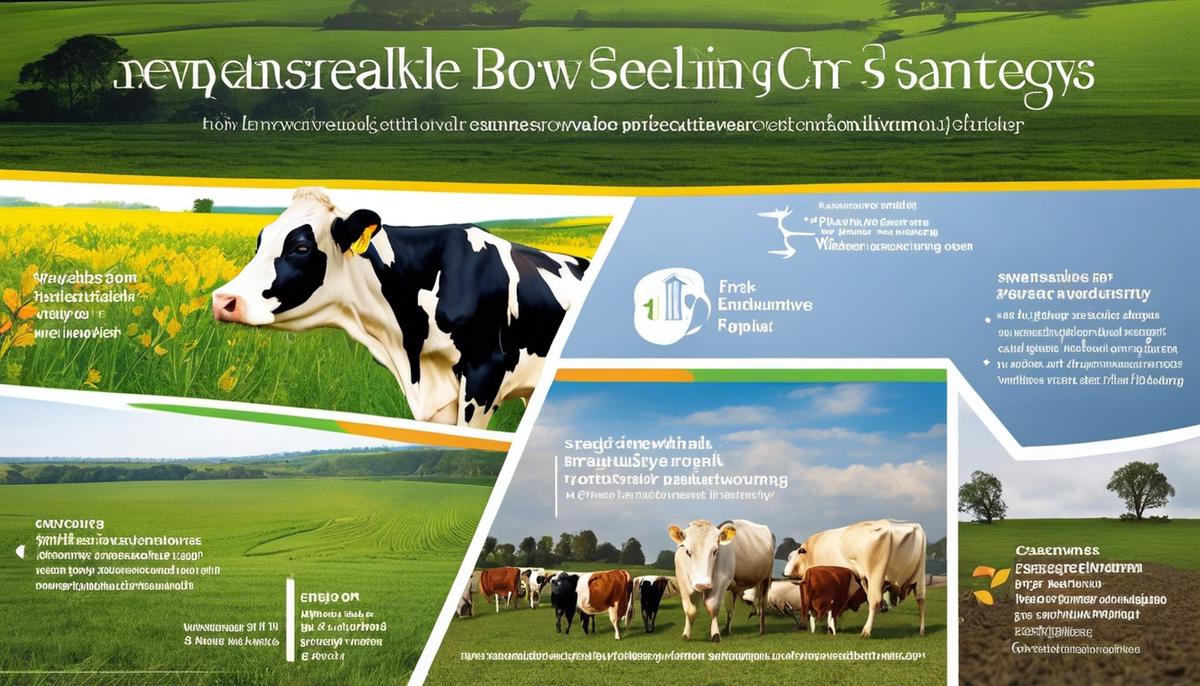
Feed Management and Economic Considerations | Cow feed
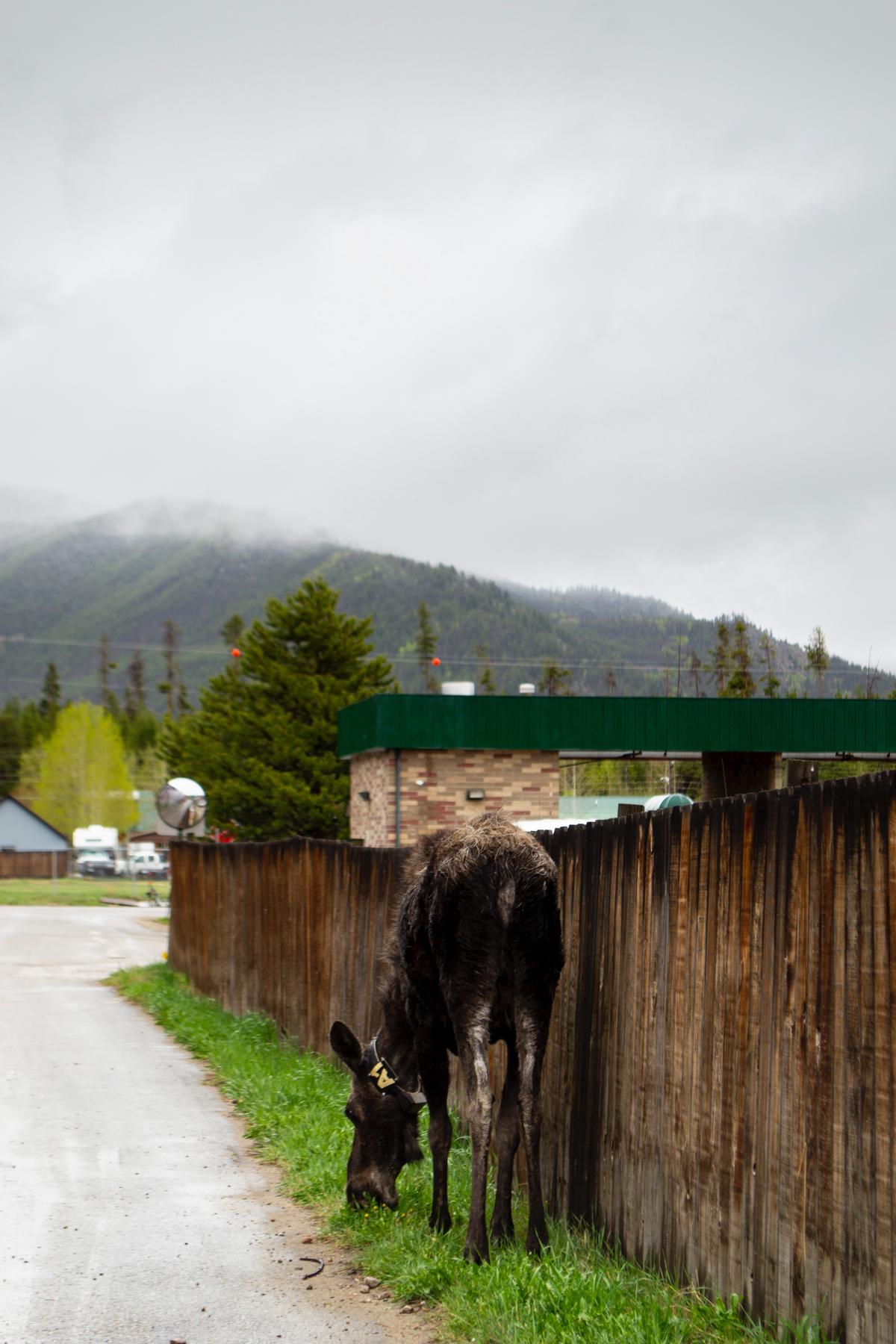
What is the best feed for cows?
Understanding the Cow's Digestive System
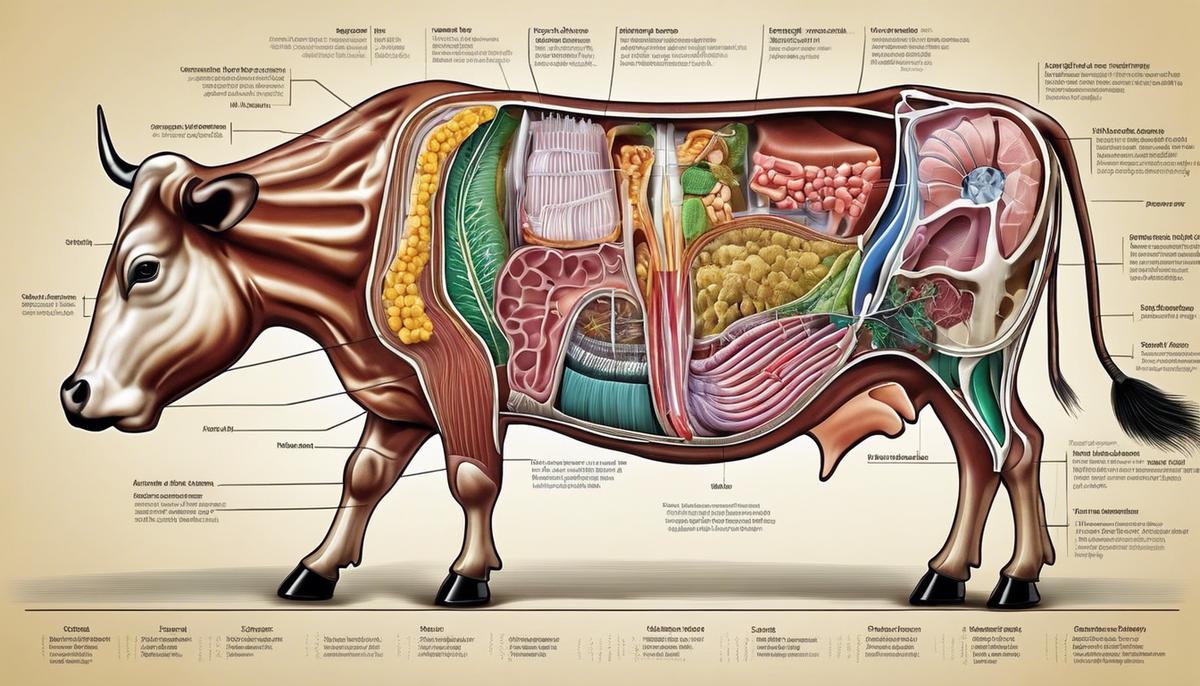
Critical Nutritional Requirements of Cows
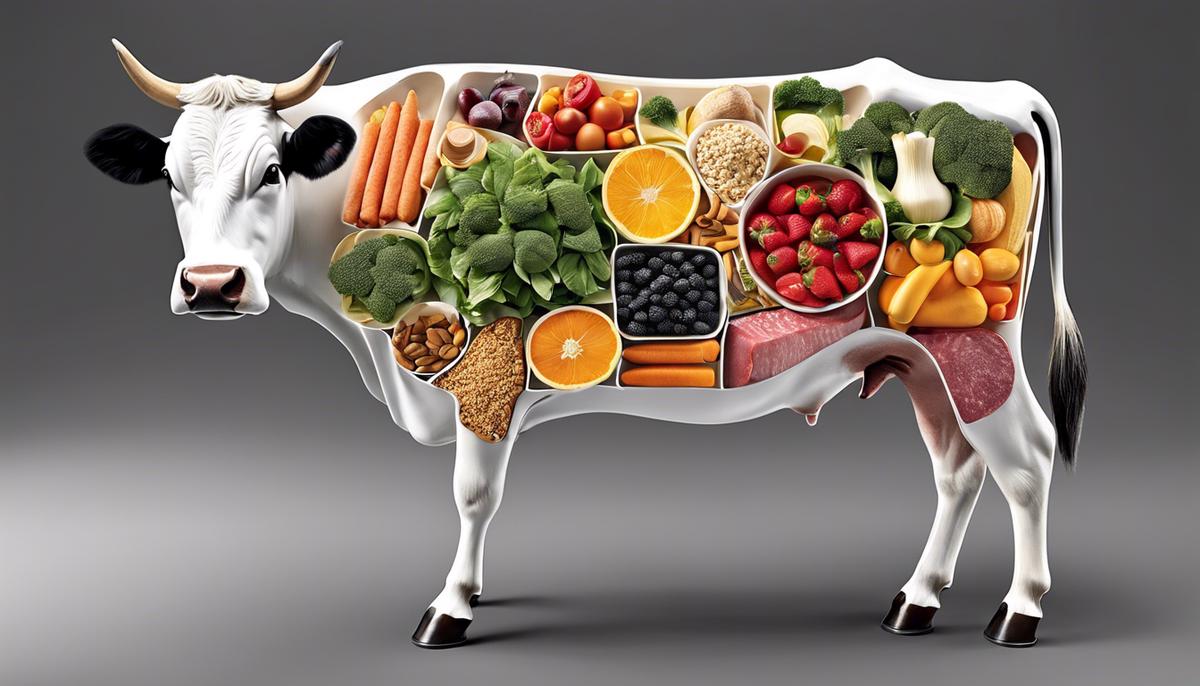
Feeding Strategies for Optimal Health and Productivity
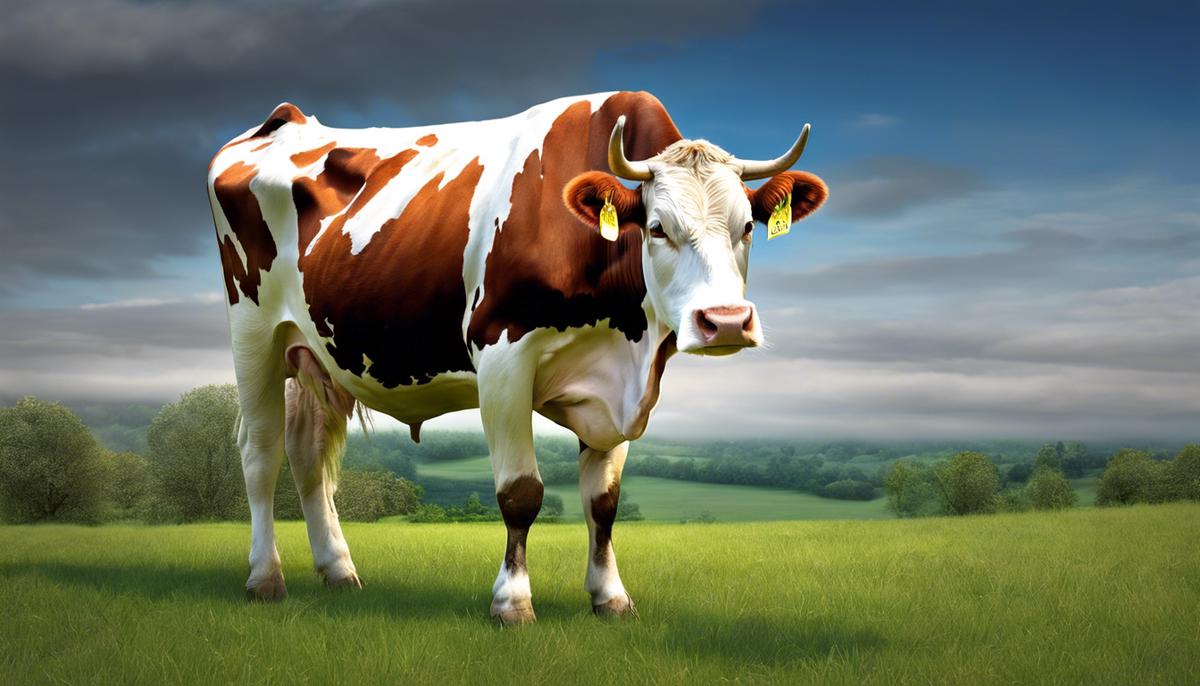
Influence of Feed on Cow Behavioral and Physiological Stress
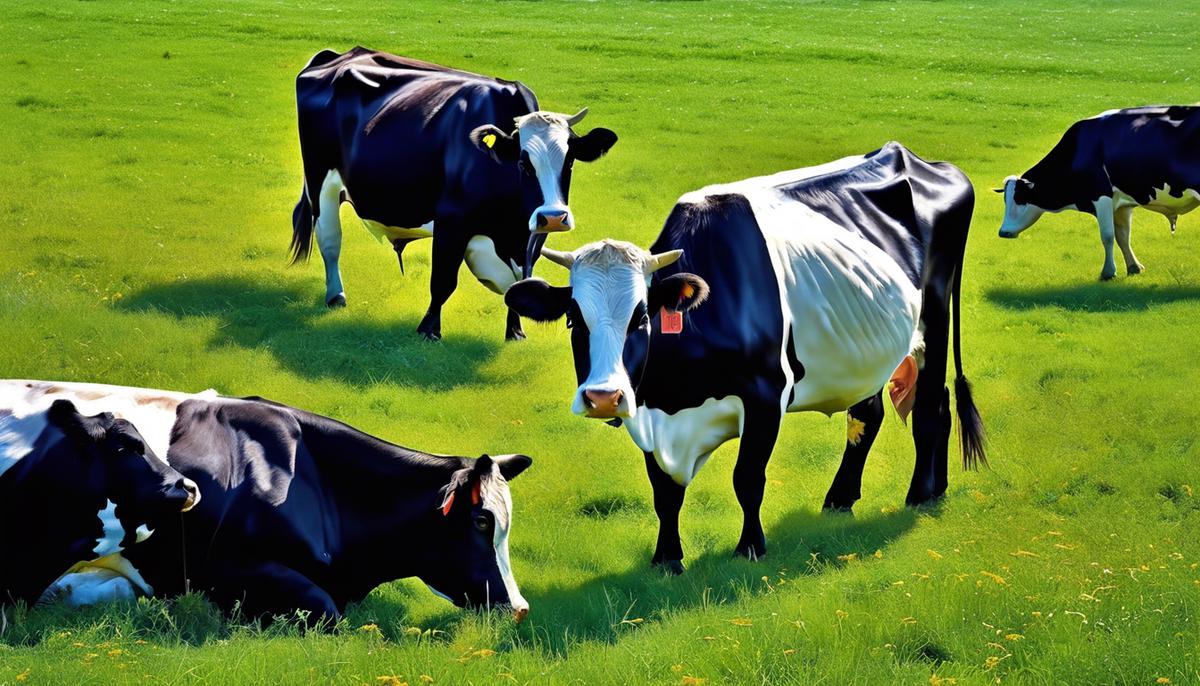
Recent Advancements in Cow Feed Technology and Research
